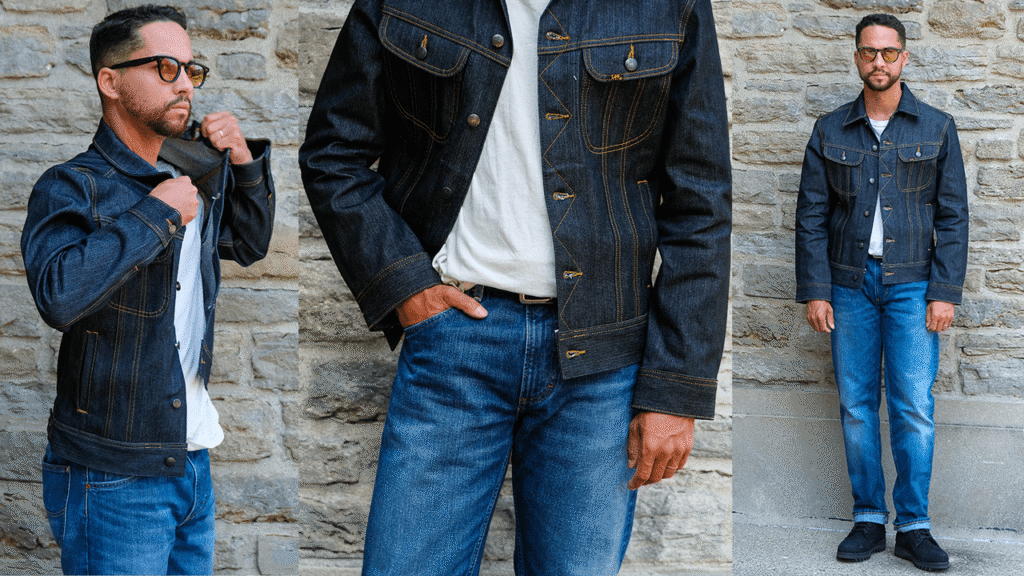In the world of denim jackets, there are five standard-bearers made by three American brands: Levi’s, Lee, and Wrangler. The Levi’s Type I, II, and III are the international icons, re-imagined by countless mall brands and Japanese denim boutiques for decades. Wrangler’s 124MJ is the rodeo workhorse. But if I had to crown one denim jacket as the real hero of the group, that title goes to Lee’s 101 Rider.
So what makes it the one, at least for me? The legend starts in 1935, when Henry David Lee dropped the 101J, the blueprint for today’s jean jacket. It was an upgrade to Lee’s first attempt, this time with vertical pleats and reinforced stitching, plus a flannel lining. Purpose-built. Fast forward to a post-World War II era, as denim breaks out in a big way, going from rail yards and ranches to the big screen. Lee, seeing the way the winds were blowing, launched the 101J Rider Jacket in 1948: streamlined and shorter, with angled chest pockets and a sharper shape. Still made for cowboys—but suddenly Hollywood icons were wearing it, too.
Fast-forward to today, when I’m buttoning up what feels like a piece of denim history with the Lee 101 Rider jacket. Lee 101 is a collection of pieces pulled from the archive, recreated with A-grade denim and an attention to detail. (It’s not the first American denim brand to realize there’s gold in the old catalog; Levi’s has been doing the same for years, with its Vintage Collection 501 jeans in particular.) The Rider makes its presence known the moment I slide my arms into the sleeves.
Credit: Omar Atwan
Credit: Omar Atwan
First impressions? This thing is heavy. The heaviest I’ve ever worn—or probably would want to wear. Mine is the Dry Indigo wash, made from a 15-oz. dry selvedge from Japan’s famed Kaihara Mill. (There’s another version in a much softer, lighter blue.) Lee says you’re supposed to wash this one before wearing, just to loosen things up. But if fashion is suffering, flawless fades are . We’re gonna earn them the hard way.
Once I’m able to bend my arms, I notice the period-correct details. Zig-zag stitching on the placket (in a faded tobacco-colored thread) for durability; those signature angled chest pockets, designed so cowboys could reach in with the opposite hand while in the saddle (and equally handy if your riding something with more than one horsepower). The adjusters at the waist let you cinch the fit, a trick that still shows up in modern jackets.
Credit: Omar Atwan
Credit: Omar Atwan
I went with a size small. The Lee 101 Rider is cut slim, but thanks to the stiffness, it wears a bit boxy—something I know will ease up with wear and washes. I appreciate the slimmer fit anyway. Come winter, I’ll button the Rider to the top and wear it under a topcoat in winter.
Beyond the topcoat, I’ll be wearing the 101 Rider the way I would any denim jacket. A Canadian tuxedo never dies, and most days I’ll be assembling mine with a white tee, boots, and—just to keep things in sync—a pair of 101 Rider jeans. I may lean more desk jockey than cowboy, but I still plan to wear in the jacket until one of us wears out.






